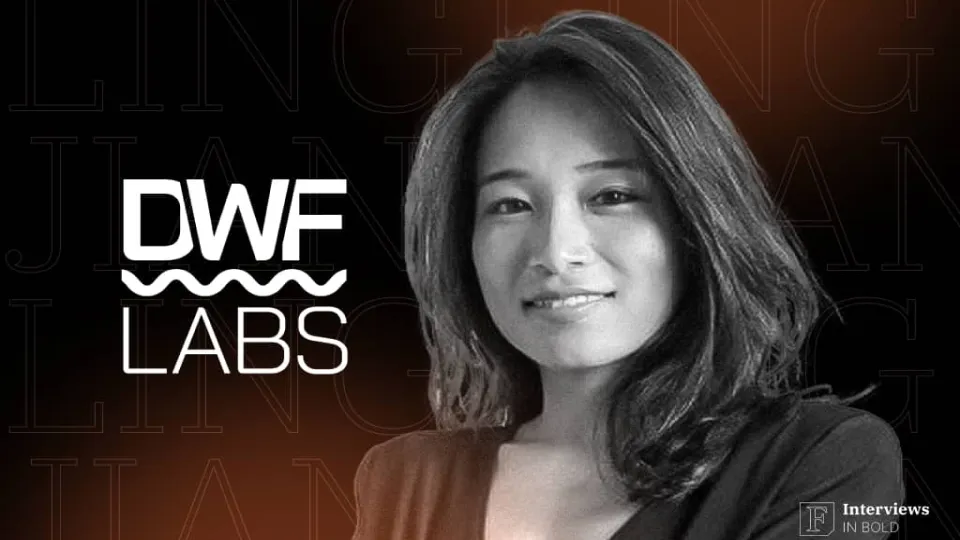
Lingling Jiang, Partner at DWF Labs, shared insights with Finbold on the company’s commitment to advancing blockchain education, driving innovation in Web3, and bridging traditional finance with the decentralised tech stack. Below is the summary of the interview.
Advancing Blockchain Education
Being asked about the DWF Labs’ recent educational initiatives, Lingling Jiang highlighted the collaboration with University of California, Los Angeles (UCLA) as an initiative aimed at bridging the gap between academia and blockchain technology. The partnership focuses on educating students about tokenized securities, particularly Security Token Offerings (STOs), and equipping financial professionals with practical knowledge. By combining theoretical learning with real-world case study, DWF Labs strives for fostering sustainability and innovation in the blockchain space.
About Strategic Partnerships
LJ emphasised that partnerships are a cornerstone of DWF Labs’ business strategy. The firm seeks to align with crypto projects that share its values of innovation, growth, and sustainability. Through tailored support, including financial investment, advisory services, and strategic guidance, DWF Labs helps Web3 achieve utility, scalability, and long-term success.
Sectors With the Investment Potential
In discussing what sectors DWF Labs is currently focused on, Jiang pointed to DeFi, digital identity, tokenized assets, and Web3 infrastructure as the most promising sectors. DeFi is redefining traditional finances, digital identity solutions are enhancing user security and ownership, and tokenized assets are reshaping asset management. Above all, robust infrastructure is also critical for enabling mainstream adoption.
What Will Drive Web3 Adoption?
According to DWF Labs’ Partner, several developments are essential for Web3 to achieve mainstream. These include scaling solutions like Layer 2 protocols, which improve transaction efficiency, and regulatory-compliant frameworks to build trust. Interoperability between blockchain networks and user-friendly interfaces are also necessary to make Web3 accessible to a broader audience.
Facilitating Institutional Engagement with Web3
DWF Labs is actively contributing to the institutionalisation of Web3, Lingling Jiang underlined. The company offers crypto liquidity services, crypto market making, and infrastructure development to attract traditional financial institutions. Collaborations with academic institutions, such as UCLA, further support the onboarding of future professionals into the ecosystem.
Challenges in TradFi
Lingling Jiang acknowledged the challenges of integrating traditional finance (TradFi) with decentralised technologies, including regulatory compliance, security concerns, and interoperability. DWF Labs addresses these issues by developing compliant frameworks, supporting technological innovations, and advocating for regulatory clarity.
The Role of Regulation in Shaping Web3
Lingling Jiang stressed the importance of regulation in establishing trust and legitimacy in the Web3 ecosystem. DWF Labs proactively engages with regulatory bodies to align its operations with evolving standards, ensuring compliance and creating a secure environment for crypto projects and investors.
Vision for the Future
Looking ahead, Lingling Jiang described DWF Labs’ vision to be a global leader in Web3 adoption and development. Over the next decade, the firm aims to drive innovation in decentralised finance, support research and education, and invest in institutional-grade blockchain solutions. By bridging traditional finance with Web3, DWF Labs aspires to build a decentralised, transparent, and accessible financial ecosystem.
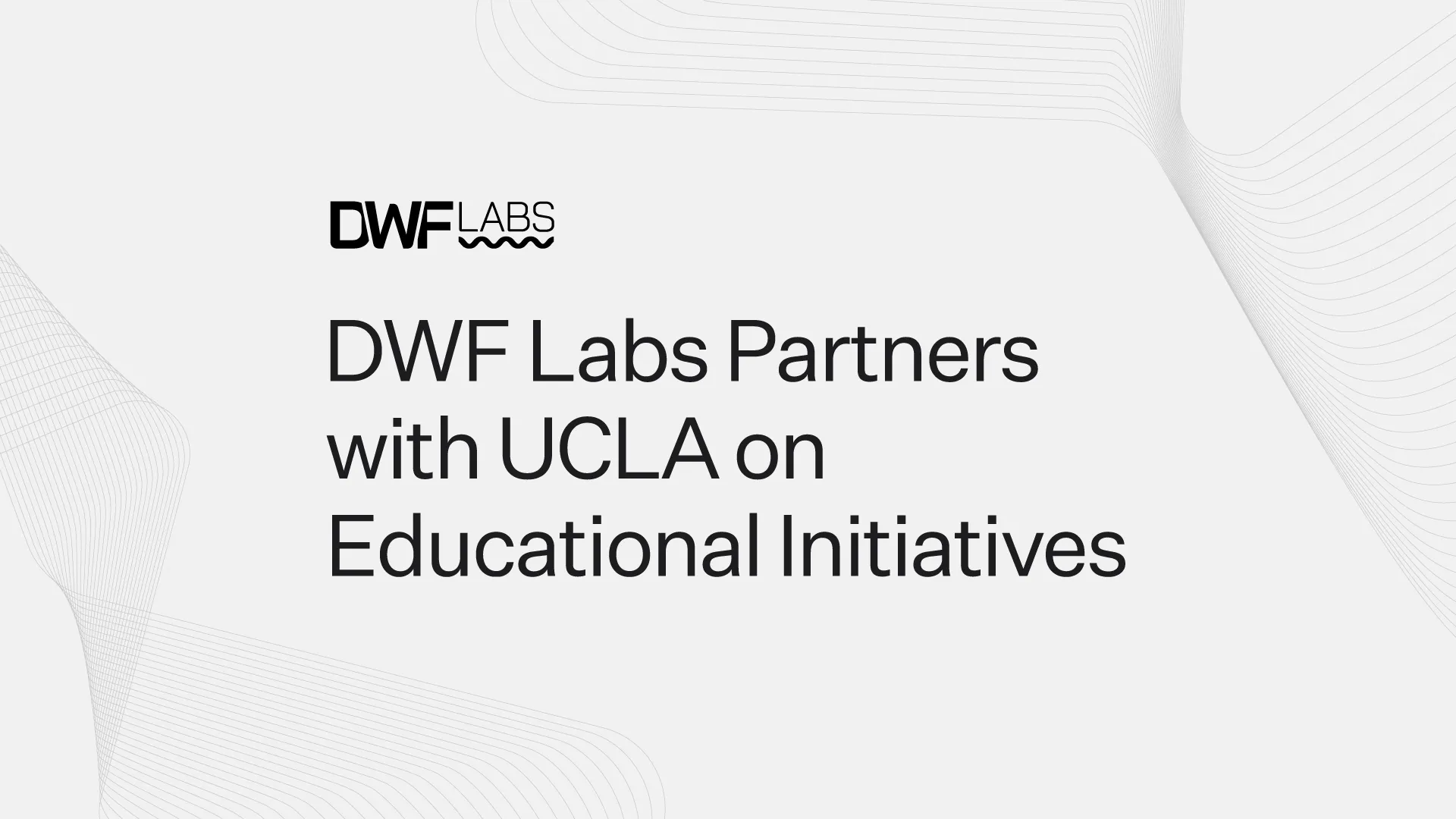
DWF Labs is honoured to announce its inclusion as a case study in the book The STO Financial Revolution, the latest educational initiative spearheaded by Alex Nascimento, from the UCLA Blockchain Faculty. This collaboration underscores DWF Labs’ commitment to advancing institutional understanding and shaping the evolving landscape of Security Token Offerings (STOs) and the wider Web3 space.
The DWF Labs case study, featured prominently in this comprehensive resource, provides insights into their innovative crypto market-making strategies and liquidity solutions, aimed at equipping students, entrepreneurs, professionals, and industry leaders with practical knowledge of tokenized securities. Alex Nascimento, author and faculty member and Co-founder of Blockchain at UCLA, has curated this textbook to serve as a core academic resource, bringing together industry insights and strategic frameworks for STOs.
‘This collaboration with UCLA is a unique opportunity to contribute to educational initiatives that will cultivate the next generation of leaders in tokenized markets,’ said Andrei Grachev, Managing Partner of DWF Labs. ‘We are excited to share our experience and help shape the industry’s future by influencing how institutions understand and engage with digital assets and STOs.’
Alex Nascimento, from the Blockchain Faculty, UCLA Masters of Quantitative Economics, said:
‘Market makers in the crypto space are essential for maintaining liquidity in digital assets and ensuring continuous trading opportunities through active buy and sell orders. Crypto market making companies like DWF Labs play a key role in stabilizing prices, minimizing volatility, and promoting market efficiency. Gaining insight into their impact is invaluable for students, entrepreneurs, and investors navigating today’s dynamic digital economy.’
With this initiative, DWF Labs continues strengthening its role as a leading crypto venture capital company, liquidity provider, institutional influencer and thought leader. This collaboration further aligns with their mission to foster industry growth by supporting academic and professional understanding of STO mechanisms, regulatory frameworks, and liquidity management.
The STO Financial Revolution will be available as a valuable educational resource, providing readers with a deep dive into the STO landscape and empowering professionals to navigate the complexities of the tokenized securities market.
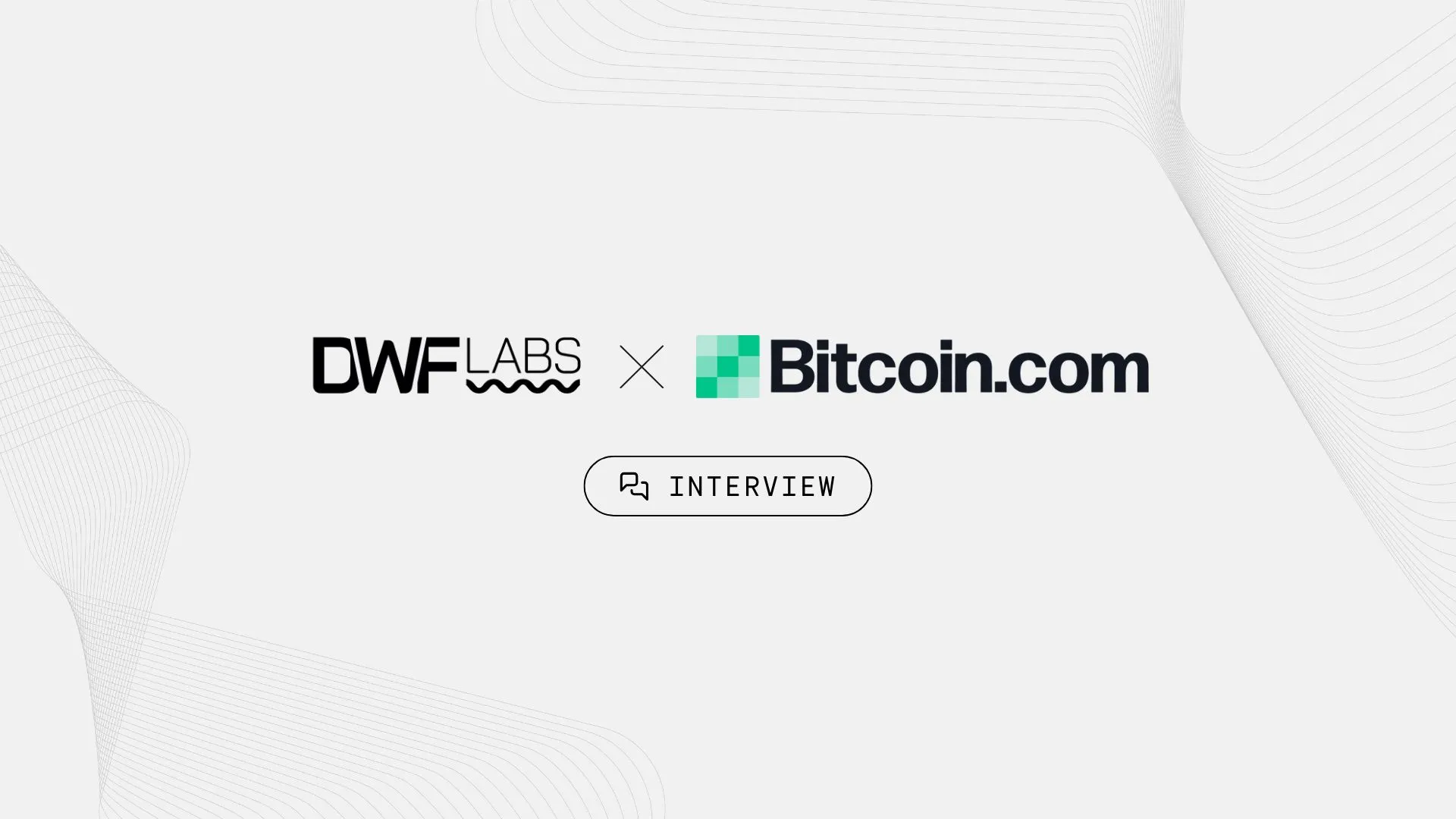
After her appointment as Partner at DWF Labs, Lingling Jiang sat down for her first interview with Bitcoin.com. In this conversation with journalists, Jiang outlined the company’s business development strategy, shared insights on the strategic prospects of the crypto market, explained DWF Labs’ investment selection process, and dived deeper into the significance of Web3, all while shedding light on the role of memecoins. Here are the key takeaways from the interview.
Regulatory Clarity in the Crypto Space
Lingling Jiang highlighted Asia's leadership as the prominent crypto industry’s hub, attributing its success to clear regulatory frameworks in countries like the United Arab Emirates (UAE), Singapore, Hong Kong, and Japan. She suggested that the recent U.S. election of Donald Trump could signal a potential shift toward clearer regulations, provided the administration recognizes crypto’s economic potential. However, she noted that any substantial changes in the U.S. regulatory landscape would likely take time due to the complexity of the ecosystem.
The Impact of Crypto ETFs: Two-Tier System?
While cryptocurrency-based exchange-traded funds (ETFs) bring stability and attract institutional investors, Jiang observed that they might dilute the influence of retail investors and reduce the volatility traditionally seen in the market. She foresaw a possible two-tier crypto ecosystem, where crypto whales focus on established assets such as ETFs, while retail traders continue speculating on volatile, lesser-known tokens:
“We could end up with a two-tier crypto ecosystem where suits trade the blue chips and degens stick to the trenches where 1,000x fortunes are won and lost.”
DWF Labs’ Role in Web3 Development
According to Lingling Jiang, DWF Labs has supported over 800 Web3 projects with crypto market making, OTC trading, and treasury management services. She emphasised the company’s selective approach, backing projects with real-world utility and long-term potential. Success, in her view, is defined by a project’s ability to innovate, decentralise processes, and generate real protocol fees:
“If a project is building a more decentralised, secure, and efficient solution to anything that’s currently available in Web3 — and is generating real protocol fees in the process — it definitely fits the bill.”
The Importance of DYOR
DWF Labs’ Partner advised retail and institutional investors to conduct thorough research, a process called “Do Your Own Research” (DYOR), and implement robust risk management frameworks. Following up, Jiang added that developers should focus on secure and transparent platforms. She also stressed the importance of partnering with established industry players and trusted communities to avoid falling prey to scams during periods of rapid innovation.
Commitment to Web3
“Web3 is the next frontier of the digital economy,” Lingling Jiang said, adding that DWF Labs remains dedicated to fostering innovation in the Web3 space, undeterred by allegations and challenges. Lingling Jiang also underlined the transformative potential of decentralisation and the firm’s focus on supporting projects that deliver real-world utility and sustainability.
Approach to Investing in Memecoins
As an integral part of crypto culture, memecoins are driven by community sentiment, Jiang commented. However, she urged caution, recommending that institutions treat memecoins as speculative assets and invest in them on a limited basis:
“It’s important to allocate a proportionately smaller portion of a portfolio to such assets and use them as an opportunistic play rather than a core holding.”
Effective risk management, liquidity assessment, and timing are critical for navigating this volatile space.
In conclusion, Lingling Jiang reaffirmed DWF Labs’ commitment to supporting the crypto and Web3 ecosystem, emphasizing innovation, strategic investment, and adaptability to evolving market dynamics.
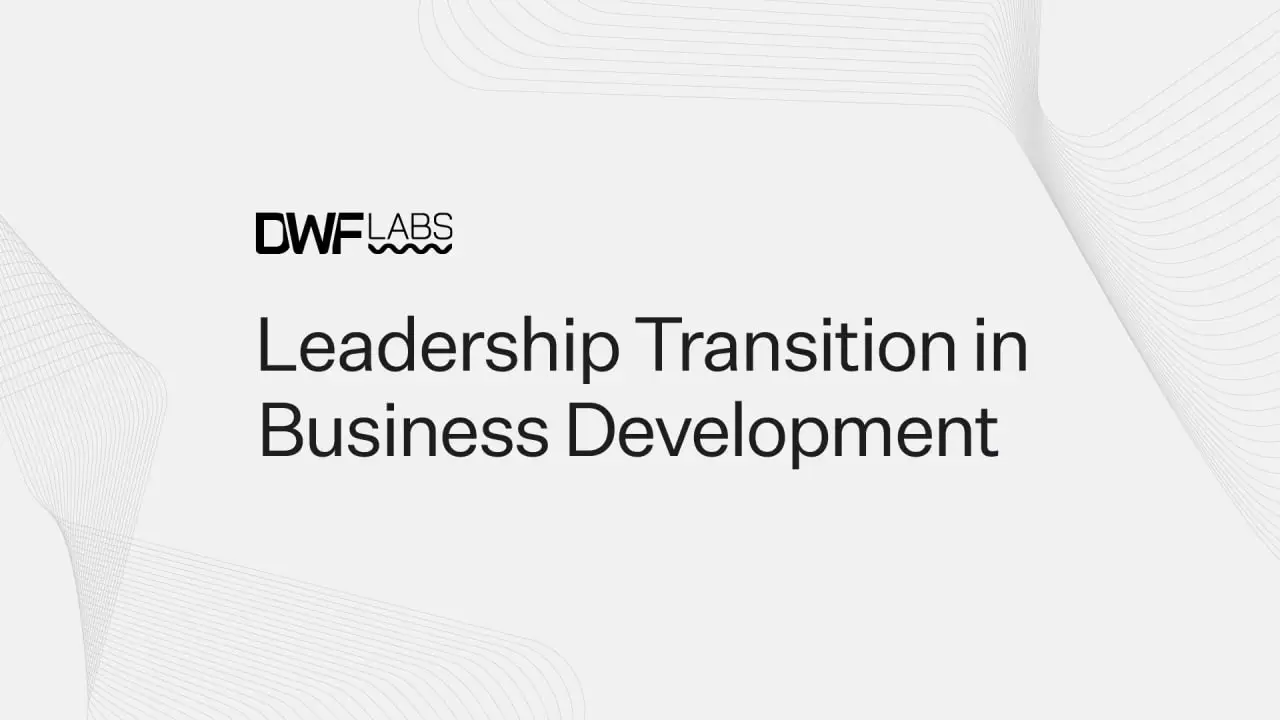
In light of recent changes, DWF Labs is pleased to announce that Lingling Jiang, our esteemed partner for Business Development, will be stepping up to lead the company’s strategic initiatives in this area. With a proven track record of driving growth and creating meaningful partnerships, Lingling will be taking over the roles and responsibilities necessary to support and expand our work with valued partners and collaborators. This transition is part of our ongoing commitment to fostering a resilient, forward-focused business environment that remains steadfast in supporting our portfolio companies.
Lingling brings a wealth of experience to her new role, positioning her as a key leader in DWF Labs’s Business Development and strategic initiatives. With over two years at DWF Labs as the Business Partner of Business Development and previously serving as Head of Regional Sales in Asia, Lingling has demonstrated her ability to drive cross-functional collaboration, optimise business operations, and build sustainable partnerships across the globe. Her tenure as Head of Hong Kong further solidified her expertise in regional and global market dynamics, fostering strong relationships within the business ecosystem.
This expanded role will include active participation in corporate decision-making, leading business development strategies, and representing DWF Labs at industry events worldwide. Her dedication to fostering impactful collaborations will strengthen our support for both new and existing partners, ensuring continuity and reinforcing our commitment to providing exceptional service.
“We are confident that Lingling’s expertise and leadership will play a crucial role in shaping our strategic direction,” said Andrei Grachev, Managing Partner of DWF Labs. “Her deep understanding of our industry and dedication to excellence make her the ideal leader to take our business development efforts to new heights.”
We look forward to the continued growth and success of DWF Labs under Lingling’s leadership in Business Development. We remain committed to our mission of driving innovation, creating value for our partners, and supporting the success of our portfolio companies.
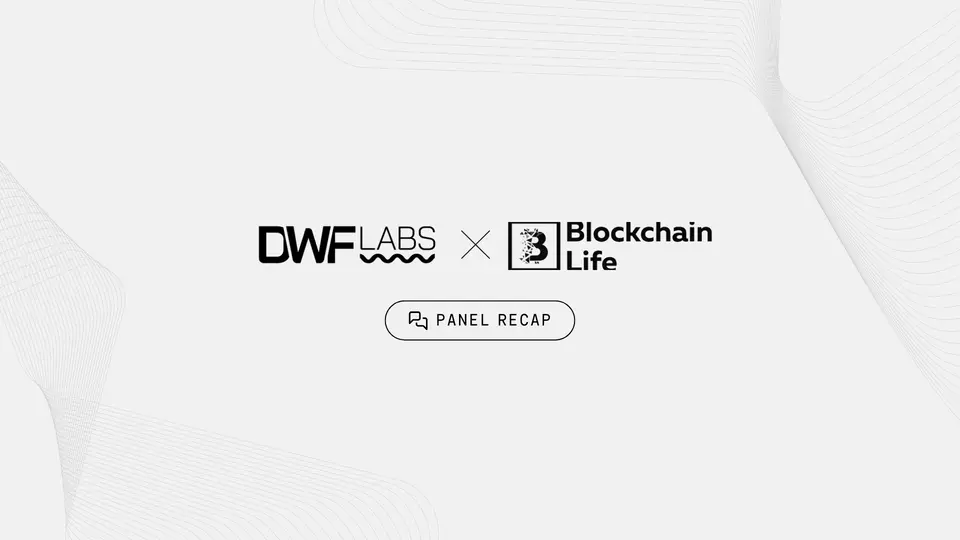
At Blockchain Life Forum in October 2024, DWF Labs’s Managing Partner Andrei Grachev shared his perspective on key trends in Web3 during the panel ‘The Unicorn Journey: Insights from Top Venture Capitalists’. He spoke during the panel alongside Yat Siu (Co-Founder and Chairman of Animoca Brands), Danilo S. Carlucci (Founder and CEO of Morningstar Ventures), Edward Chen (Managing Partner of HTX Ventures) and Alex Scott (Head of Solana Superteam Middle East). The panel was moderated by Charis Campbell (Director of Capital Markets at Animoca Brands). Together, they represented the communiry of crypto venture capital companies.
This discussion highlighted the role of ecosystems such as TON in onboarding crypto users, the marketing power of memecoins, shifting trends in crypto gaming, and the stabilising influence of institutional investment.
The Power of Ecosystems in Connecting Web2 and Web3
During the panel, Grachev highlighted that TON’s ecosystem possesses a significant asset — an existing base of millions of users via its integration with Telegram. This unique advantage has been a crucial part of TON’s growth trajectory.
Gateway applications such as the Notcoin mini-app introduced crypto concepts to mainstream users through gamified experiences. Andrei shared that as TON’s ecosystem moves towards more complex and advanced DeFi projects, TON will be able to facilitate a new, larger wave of crypto adoption.
Memecoins as an Entry Point for Web3
Grachev discussed the importance of memecoins in onboarding users into the Web3 space, sharing that memecoins serve as marketing tools and function as catalysts for broader blockchain ecosystem growth. He explained that memecoins create a domino effect: they attract new users who generate trading volume and bring liquidity to the chain, which in turn creates a more active ecosystem.
This increased activity attracts a diverse range of projects beyond just memecoins, including DeFi protocols, Real World Assets (RWA), AI Agents, and more. This organic growth pattern demonstrates how memecoins can serve as catalysts for comprehensive blockchain ecosystem development and mainstream user adoption.
What’s Next in GameFi
During the discussion, Andrei Grachev discussed GameFi and Web3 gaming, sharing how the 2021 and 2022 initial wave of crypto projects primarily focused on financial systems rather than immersive gaming experiences. These early Play-to-Earn models, while innovative, were unsustainable in retaining user interest. However, they were valuable learning experiences for the crypto gaming industry.
Grachev then outlined several key gaming models that have potential for growth. He emphasised the importance of real revenue streams beyond token economics, such as in-app purchases and in-game items. A particularly interesting phenomenon he noted was the emergence of attention-based economics through in-game advertising, where users exchange their time and attention for tokens in-game.
Institutionalisation in the Future of Crypto
The panel participants also discussed institutionalisation in crypto, sharing that, as the market enters a new era of institutional engagement, highlighted by the introduction of crypto ETFs, launching a successful token project requires more than just creativity. Success will also require a strategic approach to institutional backing from a recognised crypto venture capital fund.
Andrei Grachev also shared that significant institutional money from family offices and institutional funds is flowing into the industry. These institutions are capitalising on funding rates, arbitrage opportunities, and farming strategies that offer low-risk and stable returns.
What’s Next
In conclusion, takeaways from the panel ‘The Unicorn Journey: Insights from Top Venture Capitalists’ at Blockchain Life in April 2024 highlight key trends in the crypto space, such as connecting Web2 and Web3 users, the strategic role of memecoins, the evolving structures within crypto gaming, and the importance of institutionalisation.
As institutionalisation in crypto becomes increasingly prominent, we’re focused on advancing the Web3 ecosystem through our institutional partners such as the DMCC Crypto Centre, The Blockchain Centre Abu Dhabi, and the UCLA Blockchain Faculty. DWF Labs aims to further expand access to blockchain technologies and support wider adoption across Web3.

DWF Labs, a prominent crypto market maker and venture capital firm, is pleased to announce the launch of the crypto options trading platform. This development marks a significant advancement in the range of financial instruments available to traders and reflects our commitment to providing comprehensive and sophisticated trading solutions in the rapidly evolving digital asset marketplace.
The introduction of crypto options trading arrives at a time when the demand for advanced risk management tools and flexible trading strategies is growing within the digital asset community. Options trading allows traders to hedge positions, speculate on market movements, and gain more nuanced control over their portfolios—capabilities that are essential in the dynamic Web3 landscape.
Andrei Grachev, Managing Partner at DWF Labs, commented on the launch:
‘The decision to offer options to the market participants is a natural progression in our mission to support the crypto industry. We aim to make options simple and easily available for crypto players, from degens to institutions.’
In addition to standard crypto options contracts, DWF Labs is offering bespoke options products tailored to the specific needs of their clients through their Options Concierges. This customised approach underscores the firm's dedication to providing not just broad market access but also tailored solutions to address the unique challenges and opportunities within the Web3 space.
As a key crypto market maker, DWF Labs plays a crucial role in providing liquidity and stability to the digital asset markets they serve. The introduction of options trading is expected to contribute positively to market depth and resilience, offering participants more tools to manage risk and enhance their trading strategies. This development is also seen as a step towards attracting a broader range of participants, including those who require more sophisticated instruments to operate effectively in the digital asset markets.
With this latest advancement, DWF Labs continues to solidify their position as a leader in the digital finance sector, providing innovative solutions that support the growth and evolution of the Web3 ecosystem. The firm remains committed to expanding their offerings in line with market needs and technological advancements, ensuring that their platform remains at the forefront of the digital asset trading industry.
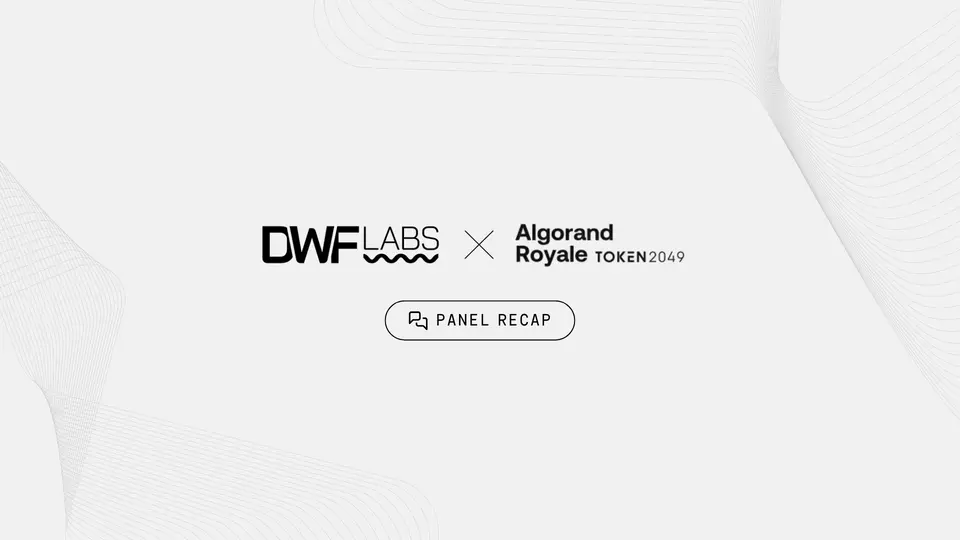
Alessia Baumgartner, VP of Ecosystems at DWF Labs, participated in the panel ‘How to Survive and Thrive as a Web3 Company’ held during Algorand Royale TOKEN2049, hosted by the Algorand Foundation. She joined the discussion alongside Marc Bernier (Founder and CEO of DaffiOne), Benedetto Biondi (Co-Founder and CEO of Folks Finance), and Michael Cotton (Founder and CEO of Meld Gold).
Check out some of Alessia’s tips for Web3 projects to implement in order to stand out in the Web3 and crypto space.
Strategic Utility and Token Design
Alessia Baumgartner shared that projects should think strategically about utility and whether they need a token. She advised founders to focus on adding as much token utility as possible to their blockchain projects. By integrating the token into core functionalities — such as decentralised community governance, rewards, or access to the project’s services — projects create intrinsic value for the crypto asset, driving user adoption and demand. This approach not only strengthens the project’s value proposition but also aligns with long-term sustainability.
Mindshare vs. Profitability: A Stage-Based Approach
Whether to focus on increasing profitability or acquiring mindshare depends on the project’s stage of development. Baumgartner highlighted that early-stage crypto projects (pre-seed, seed round, or pre-TGE) should prioritize increasing mindshare. This lays the foundation for future growth and helps establish a strong position in the competitive Web3 landscape.
Increasing Market Share Through Research
To increase market share, Baumgartner recommended conducting thorough research. Founders should analyse competitors’ partnerships, the blockchains they are building on, and their overall narratives and strategies. This understanding allows projects to identify gaps, differentiate themselves, and capitalize on untapped opportunities.
Shifting Focus to Profitability in Later Stages
For later-stage projects (post-TGE), Baumgartner shared that the focus could shift towards profitability. She noted that goals and strategies must evolve as the project matures. By prioritizing profitability, projects can ensure sustainable growth and create lasting value for stakeholders.
How Founders Can Build Lasting Projects
Alessia Baumgartner’s insights provided a clear framework for founders navigating the Web3 space. By strategically designing utility, focusing on market share in early stages, and transitioning to profitability as the project matures, founders can build resilient and impactful companies.
The panel emphasised the importance of adaptability, strategic planning, and a deep understanding of the competitive landscape for survival and success in Web3.
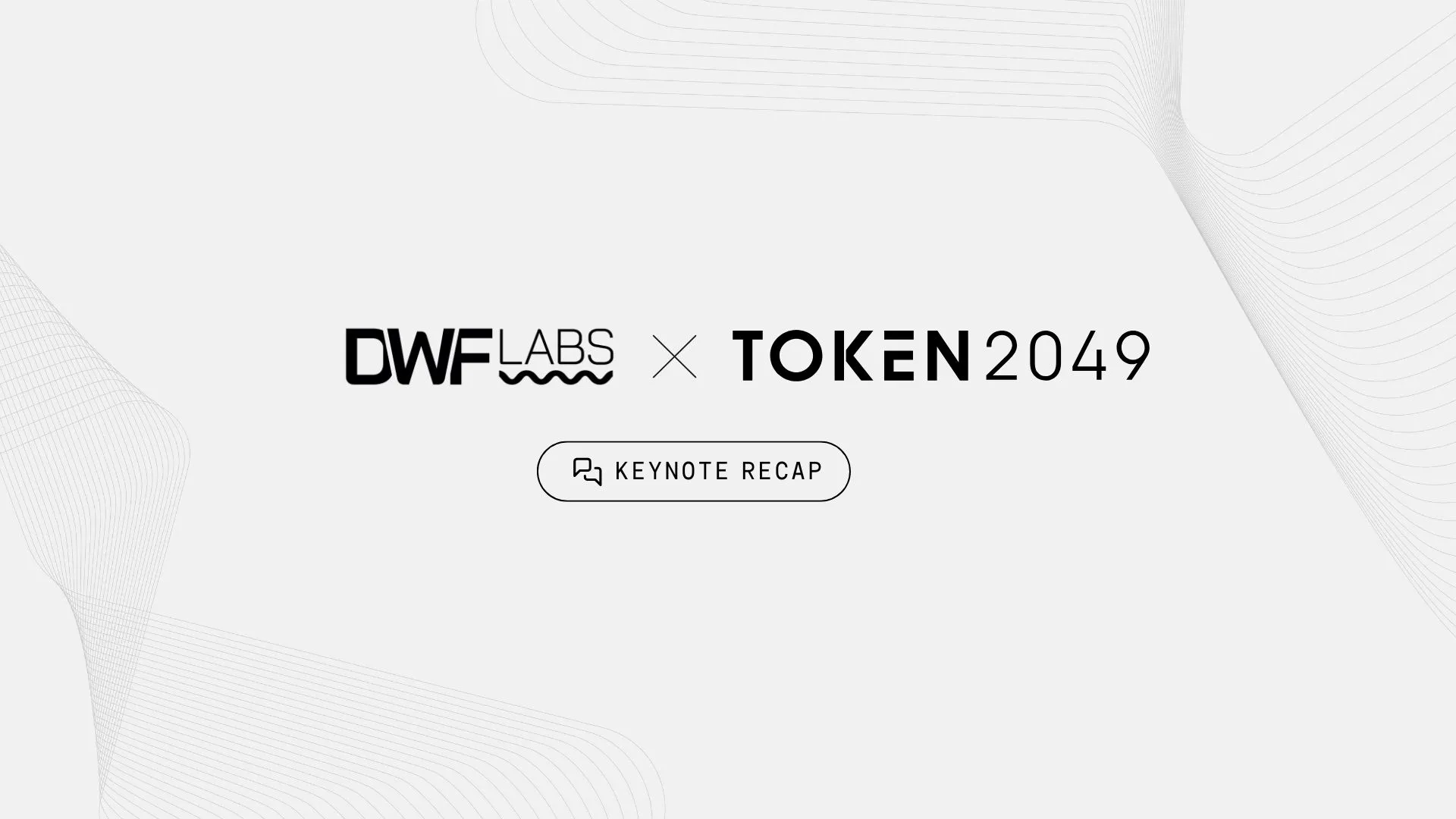
DWF Labs’s Managing Partner, Andrei Grachev, took the main stage at TOKEN2049 in Singapore on 18th September 2024. He shared about the current state of the crypto market, offering a nuanced perspective on its evolution, the rise of community-driven tokens, and the dynamics shaping its future. Here are the key highlights from his talk.
Three Major Changes in the Crypto Market
1. Shift from BTC-Centric Trends
The cryptocurrency market has grown increasingly complex, with altcoins no longer mirroring Bitcoin’s price movements. Community-driven tokens have emerged as outperformers compared to tokens backed by crypto venture capital. Grachev explained that this divergence signifies a maturing market that demands more nuanced research and strategic investment.
2. Community-Driven Tokens Leading Innovation
Tokens rooted in cultural values and community support have begun outperforming their counterparts. These tokens symbolize an exciting opportunity to tokenise cultural beliefs and foster strong community engagement. Projects with robust community backing, like memecoins, have sustained relevance due to their ability to connect with users on an emotional and cultural level.
3. Dominance of Asian Exchanges and TON Blockchain
Asian crypto exchanges continue to dominate the trading landscape, with the TON blockchain gaining prominence through memecoins and games in the form of mini apps. Grachev highlighted how the meme vertical remains a significant market driver, blending culture and commerce to attract diverse participants.
Market Evolution: What’s Driving Change?
DWF Labs’s Managing Partner attributed the evolving market landscape to global macroeconomic factors and a natural learning curve within the crypto sector:
- Historical Cycles. The methods that worked in previous cycles no longer deliver the same results. For instance, projects backed by crypto venture capital firms that once dominated the market have struggled to find a product-market fit in today’s environment.
- Decentralised Culture. The community’s influence has grown significantly. Grachev pointed to the increasing popularity of meme coins and prediction markets, which are reshaping how participants engage with and perceive cryptocurrencies.
- Mature Trading Strategies. As crypto trading mimics traditional markets, success now requires deeper research, greater expertise, and the willingness to take calculated risks.
How to Succeed in the Changing Landscape
According to Andrei Grachev, there are at least 3 strategies that Web3 projects may follow to nurture results on the crypto market in the next year:
- Embrace New Narratives. The market’s transition phase provides opportunities to replace outdated strategies. Innovators who adapt to current trends stand to thrive.
- Understand Community Dynamics. Crypto projects driven by cultural resonance and active communities have a better chance of success. Tokens like Dogecoin and Shiba Inu exemplify the power of community-driven markets.
- Prepare for Perpetual Markets. Grachev predicts a shift towards crypto perpetual futures markets, where users can amplify potential returns through leverage. However, this trend also increases risk, requiring careful navigation.
Looking Ahead: Three Market Directions
Grachev identified three distinct directions for the future of cryptocurrency:
- Institutional and Regulated Markets. The crypto market will see the integration of real-world assets (RWAs) and central bank digital currencies (CBDCs). This will come with greater regulatory oversight to ensure transparency and compliance, paving the way for mainstream adoption.
- Utility Tokens. Continued innovation in protocols and smart contracts will drive this segment. Web3 startups should focus on project quality, team expertise, and the ability to adapt to new crypto market trends.
- Community-Driven Tokens. A big segment of the market, mainly represented by memecoins, will continue thriving on cultural and community engagement. Despite regulatory challenges, this segment represents the essence of crypto’s grassroots appeal.
Morning Stars of the Crypto Market
Andrei Grachev concluded his speech with a reflection on the emergence of new leaders and technologies within the market.
According to DWF Labs’s Managing Partner, Binance will remain the dominant exchange, accounting for 50% of the market, although other players like Bybit, Gate.io, and OKX show strong performance, as well.
Next, community tokens will keep outperforming VC-backed crypto assets, underscoring the power of collective ownership and cultural resonance.
Finally, with its innovative consumer-focused applications, the TON blockchain will further exemplify how new ecosystems embrace user engagement and adoption.
Final Thoughts
Grachev’s keynote underscored the importance of adapting to change in the crypto market. He urged participants to approach investments with critical thinking and thorough research, reminding them that the fast-paced nature of crypto requires agility and foresight. As the market matures, those who embrace innovation and understand the evolving landscape will be best positioned for success.
